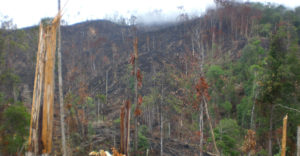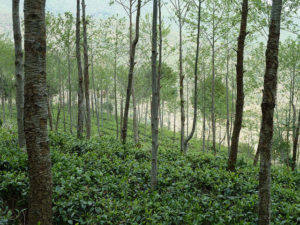
With the realization that climate change is real, consumers are demanding products that come from responsible manufacturing processes. But do market branding terms such as zero deforestation, deforestation free, carbon neutral, climate smart have any meaning?
A new book by the European Tropical Forest Network investigates if deforestation-free claims are genuine or simply designed to influence purchase decisions.
Consumers worldwide are becoming aware of how manufacturing processes contribute to deforestation and greenhouse gas emissions, and in the long term lead to climate change. With this knowledge, they are demanding products that come from responsible value chains, right from the point of the production and extraction of raw materials to delivery at retail points.
Manufacturers have responded to this call by consumers by using labels such as zero deforestation, deforestation free, carbon neutral, climate smart and a host of other terminologies.
Methods used by the United Nations Framework Convention on Climate Change (UNFCCC) to account for emissions focus on the supply side, based on country land area and production systems and nationally determined contributions (NDCs).
However, a new study suggests that by using demand-side accounting, looking at human population and per capita emissions based on lifestyle, individually determined contributions to climate mitigation can complement nationally determined contributions.
“Labelling products as ‘deforestation-free’ as an attempt to satisfy consumers’ demand only takes into consideration one side of the production chain without consideration for the connection with other drivers of deforestation,” said FTA researcher Dr. Meine van Noordwijk, a scientist at the World Agroforestry Centre and lead author of an introductory paper.

Making the connection between deforestation and the economy
The study explored this connection from seven perspectives:
- When, how and why zero deforestation claims arise in global trade
- How forest definitions relate to zero deforestation claims
- The degree of variation in ‘footprints’ of equivalent products
- Tracking products that go through multiple market transactions as opposed to easy-to-follow vertically integrated value chains
- Interaction of all participants in totality in a value chain without isolation of those that are responsible producers
- Personal consumer decisions in relation to lifestyle choices, dietary changes and waste reduction that may have a bigger effect than simply choosing products with smaller carbon footprints
- How improved productivity and value chains can contribute to green economies
Read the full paper: Zero deforestation: A commitment to change
Conclusion
The study concludes that forms of certification that influence consumer choice need public scrutiny as use of the term ‘forest’ in the context of defining the responsible production is often unclear. Second, is that the accepted cut-off date for historical forest conversion is an essential detail for any forest-protecting claims. Third, as deforestation is a stepwise and permanent process, the chain of custody process should apply to geographical areas, not just products. Fourth, blanket certification covering products from a large landscape or jurisdiction will carry more weight rather than a product-by-product certification, especially if they demonstrate sustainable forest management. Fifth, individual efforts can go a long way in global forest protection particularly where they complement national commitments and goals. Finally, the extraction of primary agricultural products with low value addition and little on-site processing will continue to pose a risk to remaining forests.
“Green growth strategies that integrate land use plans, good agricultural practices and improved value chains, can promote a landscape approach through public-private partnerships that achieve equitable economic growth while conserving forests and maintaining healthy ecosystems,” added Dr. Sonya Dewi, the World Agroforestry Centre’s country coordinator for Indonesia and co-author of the study.
It may be too early to state what part of current zero deforestation claims are substantiated by changes on the ground in production areas, and what is perceived to be shifting blame with no net beneficial effect.
“Ultimately, positive impacts may arise from a complementarity relationship between individually and nationally determined contributions. Zero deforestation intentions are laudable, but attention to detail is needed to make it real,” concluded van Noordwijk.
Van Noordwijk, M., Dewi, S., Minang, P.A., Simons, A.J., 2017c. Deforestation-free claims: scams or substance?.
Pasiecznik, N., Savenije, H., (Eds.) 2017. Zero Deforestation: A Commitment To Change. ETFRN News 58, 11-16.
Read also: A world with trees but without the word ‘forest’ – a thought experiment
By Susan Onyango, originally published at ICRAF’s Agroforestry World.
This work has been supported by the CGIAR Research Program on Forests, Trees and Agroforestry. The World Agroforestry Centre is one of the 15 members of the CGIAR, a global partnership for a food-secure future. We thank all donors who support research in development through their contributions to the CGIAR Fund.











